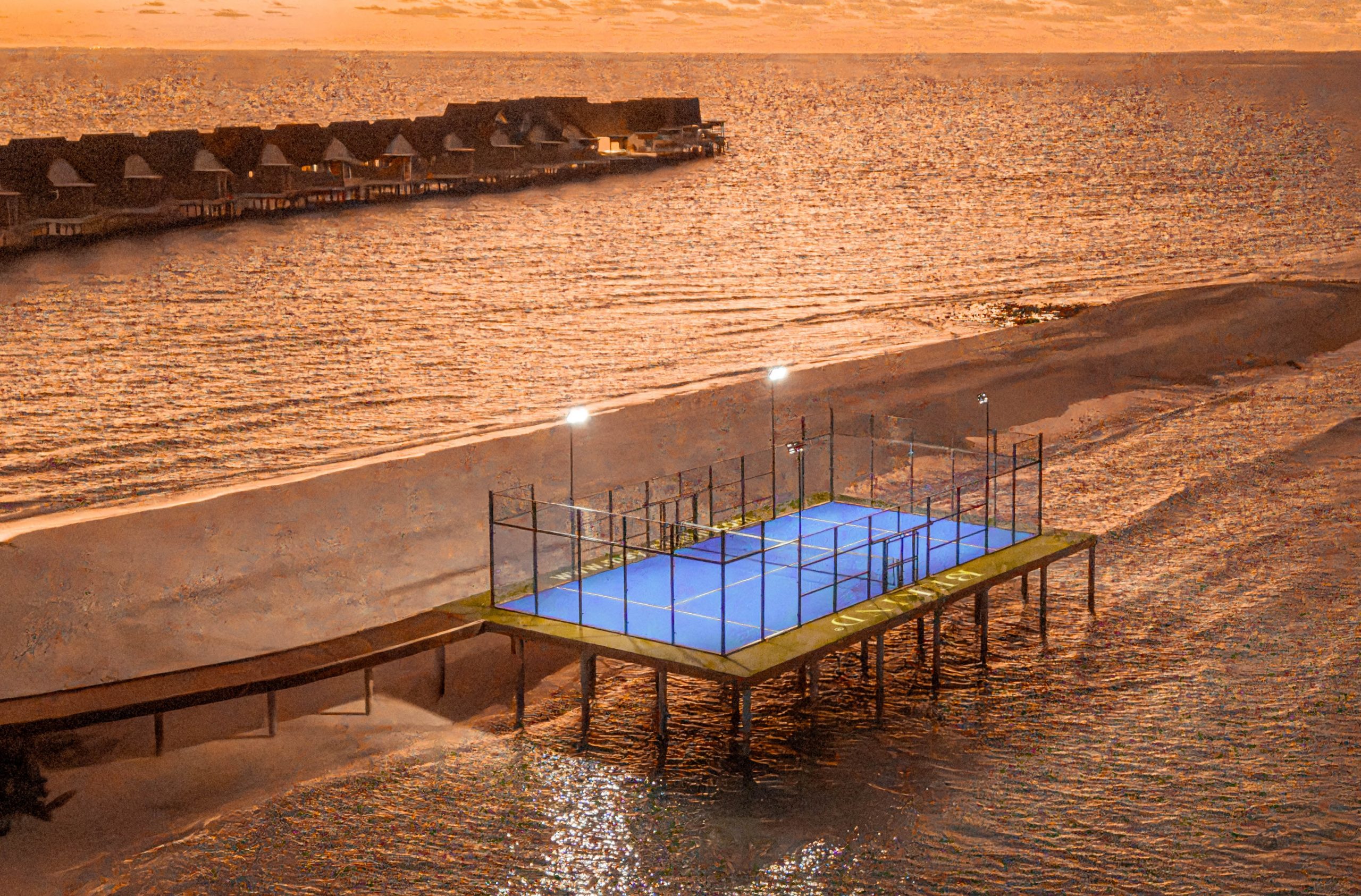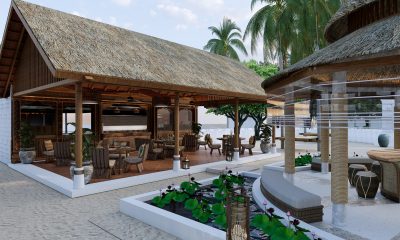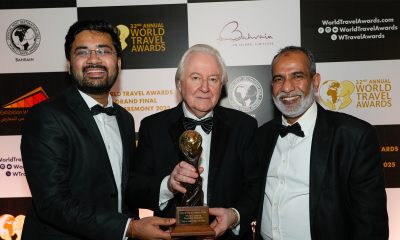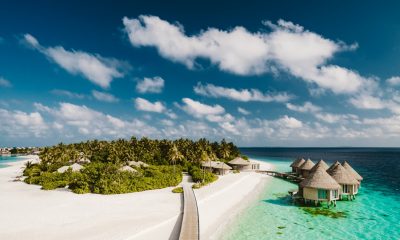Action
The billionaire, Bollywood and the future of Indian football

MUMBAI (Reuters) – A storm could be brewing in India’s top-flight football, a glamorous and acrimonious world that encompasses Asia’s richest man, the cream of Bollywood and a self-styled former gangster.
Mukesh Ambani, the billionaire tycoon who commands the Reliance Industries corporate empire that owns the Indian Super League, is facing pushback to his family’s dominance from some executives in the country’s football association and clubs.
At stake is the financial future of football in a country devoted to cricket. The outcome of the power struggle could also help shape whether India can ever become a world force in the game, realising ex-FIFA president Sepp Blatter’s description of being a “sleeping giant” – and, of course, the big dream: whether it can one day play in or even host a World Cup.
Ambani’s holding group launched the Indian Super League, an elite competition of newly created teams, in 2014 with the aim of attracting investment and big global names, much like the Indian Premier League has in cricket.
However tensions have been building over who ultimately calls the shots: the Indian football association, which technically governs football at all levels, or Ambani’s group which owns the top league of 10 teams.
It’s a rare power split in global football, and a recent dispute between Ambani’s camp and the association illustrated differing visions over the direction of the Indian game, whose national team is ranked 108th globally.
This year, before the COVID-19 pandemic, a top executive at India’s football association, Kushal Das, wrote to Martin Bain, the Ambani lieutenant who heads Football Sports Development Limited (FSDL), a Reliance holding company that owns the league.
The national coach, employed by the association, has complained that the enlisting of so many foreign recruits in Indian football could hold back the development of home-grown players. Das, in a March email exchange seen by Reuters, said the governing body had the right to limit the number of foreign players allowed to compete in the Super League.
The dismissal was swift.
“Contrary to the position in your email, all competition regulations rather need approval from FSDL,” Bain responded, according to a copy of the email exchange seen by Reuters.
The football association backed down for this season.
Representatives for Reliance and FSDL did not respond to repeated requests for comment for this article. The football association’s media director, Nilanjan Datta, declined to comment, but said questions about tensions with FSDL were “baseless”.
Requests for comment from Bain and Das, via FSDL and the association, were not responded to.
Indian game of two halves
The player issue is disputed globally; some argue imported veterans stand in the way of domestic talent, while others say they haul up standards and share skills and experience.
But the exchange also reflects a conflict within the Indian game.
FSDL and the Ambani family’s supporters says the Super League has raised awareness and money for a disorderly and underinvested sector, and brought in marquee players such as Italy’s Alessandro Del Piero and France’s Robert Pires.
Ambani’s wife Nita, FSDL’s chair and the public face of the league, has expressed hope India will qualify for the 2026 World Cup, and one day host the event. And some Super League club owners are committed to what they consider a football revolution.
“Indian players are benefiting from the arrival of quality foreigners and coaches,” said Mandar Tamhane, CEO of JSW Bengaluru FC. “Football has become a lot more tactical and technical,” he added. “The exposure has helped Indian football develop.”
But the Ambanis’ influence is resented by some club owners in India’s traditional football league, the I-League, who say the Super League is sucking attention and investment from the rest of the game and stunting its long-term development.
ADVERTISEMENT
“This is a hostile takeover if there ever was one. They basically own football,” said Ranjit Bajaj, a self-described former gangster who found redemption in football, and a prominent figure in the game who took Punjab’s I-League side to a national championship in 2018 as its owner. “It’s really sad.”
The Ambanis did not respond to requests for comment made via Reliance.
The family is accustomed to domestic business dominance.
The Reliance empire, with a market value of about $153 billion, includes India’s leading telecom firm, a major retailer, its largest refining complex, a news outlet and a Bollywood studio. The group’s revenue last fiscal year accounted for around 3% of India’s $2.9 trillion economy.
‘Such a difficult situation’
Reliance and partner IMG Worldwide bailed out the cash-strapped football association a decade ago, pledging around $140 million over 15 years in return for sponsorship, licensing rights and running the Super League.
The association remains dependent on the deal money. It sent six emails to Reliance executives between May and October last year, reviewed by Reuters, saying payments of $6 million had not been received. One warned of a “severe cash flow crunch” and said the association had to put payments to suppliers on hold.
A Reliance executive answered twice, once saying it would take more time to release the payment and then saying the payment was in process.
Reliance did not respond to requests for comment on this email exchange.
The football association has considered whether it would be possible to renegotiate parts of the contract, according to an audio recording reviewed by Reuters of its president speaking to I-League executives at a meeting last year, although it is not clear which parts.
“When you’re dealing with a giant like FSDL, whose parent is Reliance, legally you will land up in such a difficult situation,” association President Praful Patel said in the July meeting.
He said FSDL had saved the association from falling into debt, adding “They have invested so much money.”
Patel did not respond to requests for comment made via the football association.
Business meets Bollywood
Thus far, however, the Super League itself is proving neither hugely popular nor lucrative – a rarity for an Ambani venture. Stadium attendances have halved over the past six years, and the pandemic is likely to worsen the situation.
Of course, creating a profitable league in cricket-mad India was always going to be a tough task. But industry veterans say Ambani erred by excluding India’s original clubs and creating a standalone tournament without promotion or relegation.
“It was 100% a wasted opportunity. The money coming in is welcome, but it should be spent in a proper manner – not just creating a hype,” said leading sports commentator Novy Kapadia.
The Super League’s original eight clubs were owned by Bollywood heavyweights like Ranbir Kapoor, cricket champions including Sachin Tendulkar and prominent businessmen, though several have since exited. Two new teams joined in 2017.
Ambani’s group initially projected, in 2014, that clubs would be profitable within about five years, according to an industry source with direct knowledge of the matter.
However none of original eight clubs, whose latest financial statements were reviewed by Reuters, had broken even by March 2019, save for Bengaluru, with about $234,000 in profit.
FSDL, of which Reliance owns 65% and Walt Disney-owned broadcaster Star India 35%, has significant control over clubs, according to a draft 2014 contract seen by Reuters.
Clubs must select coaches from a league-approved list, cannot sell shares without approval and must spend at least $500,000 per season on marketing.
Star India referred questions to FSDL.
Sports commentator Kapadia said the league’s future depended on billionaires continuing to bankroll their clubs, especially as the next season could be delayed and played without foreign players or spectators due to the coronavirus.
“The hit will be very severe,” he said, but added the league would continue “as long as there are enough rich people in India to burn money”.
Reporting and photo: Reuters
Action
Denise Höfer returns to The Nautilus Maldives for four-day padel programme in March 2026

The Nautilus Maldives is set to welcome back Denise Höfer, Germany’s No. 1 padel player and a leading global ambassador of the sport, for a renewed edition of its Masters for Masters series, taking place from 25 to 28 March 2026. This four-day programme invites families, couples and players of every level to discover Padel as a joyful shared adventure, guided by one of the world’s most inspiring Padel athletes.
Padel has grown into a worldwide phenomenon, celebrated for its accessibility and its ability to bring people together. Fast, intuitive and inherently social, it is the perfect sport for parents and children, partners and friends. With its playful nature and quick learning curve, Padel creates rare moments where beginners and seasoned players can genuinely enjoy the game side by side.
In this spirit, The Nautilus presents a Padel Masterclass shaped by connection. Whether learning your first rally with your partner, watching your children gain confidence on the court, or joining a spirited group session with fellow travellers, the programme transforms play into an experience of shared joy and discovery.
Guests will train with Denise Höfer across a curated line up of classes. Tailored, on-demand experiences including Couples Escape, Family Fun, Cardio Padel and Padel × Wellness invite guests to hyper-personalise their journey, blending movement with mindfulness, and performance with light hearted enjoyment. Complimentary daily sessions feature a Group Masterclass and a Children’s Masterclass, each thoughtfully crafted to suit different learning styles and skill levels.
After energising mornings on the court, guests can retreat to Solasta Spa for treatments inspired by natural flow and deep release. Personalised massages, stretching rituals and ocean-influenced therapies provide a gentle counterbalance to the day’s activities, inviting both body and mind to settle into a state of restoration. The experience becomes a soothing rhythm of movement, rest and reconnection, perfectly aligned with the private island’s unhurried philosophy.
With just 26 ultra-luxury houses and residences in the Baa Atoll UNESCO Biosphere Reserve, The Nautilus offers the ideal setting for meaningful time together. Days unfold freely, guided not by schedules but by the simple desire to savour each moment. Whether learning a new skill as a family, sharing a playful match at sunset, or cheering one another from the sidelines, every experience becomes part of a memory shaped by spontaneity and warmth.
The Padel Masterclass with Denise Höfer invites guests to discover more than technique. It offers a chance to bond, to grow and to reconnect with the joy of learning something new together. At The Nautilus, this journey is shaped not by rules, but by the freedom to follow your own rhythm.
Denise Höfer, Germany’s No. 1 Padel Player, shares: “I’m thrilled to be returning to The Nautilus for this special edition of its Masters for Masters series. The Nautilus’s Padel court is truly one of my favourites in the world: it’s incredible setting and stunning lagoon views create an atmosphere unlike anywhere else. I can’t wait to share this unique experience with The Nautilus guests once again.”
Adan Gomez, General Manager of The Nautilus Maldives, adds: “We are delighted to welcome Denise Höfer back to our shores. Having an athlete of her talent and success return to our island is a true honour and offering our guests the rare opportunity to train with her makes this event genuinely exceptional.”
Event Details:
- Dates: 25 to 28 March 2026
- Location: The Nautilus Maldives
To learn more about Denise Höfer and this exclusive experience, please visit the resort’s website. To book your stay, please contact hello@thenautilusmaldives.com
Action
Siyam World achieves snorkelling world record with 307 participants

Siyam World Maldives has officially made global history. On December 5th, the island pulled off one of its boldest ideas yet, becoming the first resort on the planet to earn a Guinness World Records title for The Most People Snorkeling Simultaneously at a Single Venue. In partnership with Freedive Maldives, Siyam World rallied an incredible 307 snorkelers from guests, neighbors, and ocean lovers across the region, diving past the required 250 participant mark and turning the house reef into a spectacular sea of fins and fun. Guinness World Records officials flew in to verify every detail, and for the first time ever in the Maldives, every participant received an official Guinness World Records medal, making “Snorkel World 300” a milestone etched not only in record books but also in everyone’s memories.
The energy of the day embodied everything Siyam World stands for — a big, bold, anything-is-possible playground where imagination meets island life. The event was more than a record attempt; it was a celebration of marine life, community connection, and Siyam World’s adventurous DNA. The event aligned with Sun Siyam Resorts’ ongoing sustainability initiatives, encouraging guests and locals alike to appreciate and protect the natural beauty of the Maldives’ underwater world. It also served as a proud moment for the destination. As the first Guinness World Records medal ceremony ever held in the Maldives, the event spotlighted Maldivian hospitality, creativity, and ocean culture on a global stage.

“What a moment. Being the first resort in the world to set a Guinness World Records title is something we will always carry with pride, not just for Siyam World and Sun Siyam Resorts, but for the Maldives as well. We have never been the type to follow the usual path; doing the unexpected has always been our style. A huge thank you to everyone from the nearby islands who came together to make this possible,” said Ausy Waseem, Resort Manager, Siyam World.

If any resort was going to break a world record, it was always going to be Siyam World. From adrenaline-fueled adventures to quirky island experiences that spark global attention, Siyam World has earned its reputation as the Maldives’ most unrestrained, maximalist playground. This Guinness World Records title adds yet another chapter to its growing list of “only-at-Siyam” moments, proof that the resort is not just a place to stay, but a destination where the extraordinary is the everyday.
Siyam World now stands proudly as a Guinness World Records titleholder, an extraordinary accomplishment shared with the Maldives and the global travel community.
Featured
World-first overwater padel tennis court launched at Meyyafushi Maldives

Meyyafushi Maldives, a new five-star premium all-inclusive boutique resort, has introduced what it describes as a world-first in resort recreation: a fixed overwater padel tennis court. Positioned above clear lagoons and framed by sweeping sunset views, the court offers guests an opportunity to play and unwind in a distinctive setting surrounded by panoramic ocean vistas.
Located in the Lhaviyani Atoll, the overwater court allows players to take part in a match while immersed in the natural calm of the surrounding seascape. Guests staying at the resort are offered one hour of complimentary padel tennis as part of the premium all-inclusive package. The setting provides a secluded and tranquil space for both beginners and experienced players to practise with the sound of the ocean beneath.
“Padel tennis has become one of the fastest-growing sports in the world, and we wanted to bring it to life in the most spectacular way possible,” said Ahmed Siaar, Cluster General Manager of BeKind Hotels & Resorts. “Playing on water, surrounded by endless blues, transforms the game into something transcendent – it’s active luxury at its finest.”
The overwater court forms part of Meyyafushi’s wider range of facilities, which include an underwater dining restaurant, an overwater wine cellar, water pool suites with slides, a mini bowling lane, and an adults-only sky bar featuring a glass-bottom infinity pool. Each facility has been created to offer experiences that encourage connection, exploration and wellbeing.
With uninterrupted sunset views and a distinctive overwater location, Meyyafushi Maldives’ padel tennis court marks a global first for the sport, bringing together physical activity, landscape and design in a single setting.
-

 Cooking5 days ago
Cooking5 days agoMaakeyolhu: RAH GILI MALDIVES launches signature dining experience honouring Maldivian fishing culture
-

 Awards1 week ago
Awards1 week agoMaldives again named World’s Leading Destination
-

 Awards1 week ago
Awards1 week agoTrans Maldivian Airways named World’s Leading Seaplane Operator 2025
-

 Action1 week ago
Action1 week agoSiyam World achieves snorkelling world record with 307 participants
-

 Featured1 week ago
Featured1 week agoNoku Maldives unveils long-term Sea Turtle Conservation Programme
-

 Featured1 week ago
Featured1 week agoBlue Mind Theory brought to life at InterContinental Maldives Maamunagau
-

 Featured1 week ago
Featured1 week agoFrom spa rituals to sunrise yoga: Angsana Velavaru champions mindful living
-

 Awards1 week ago
Awards1 week agoHulhule Island Hotel extends global leadership with 14th consecutive World Travel Award









